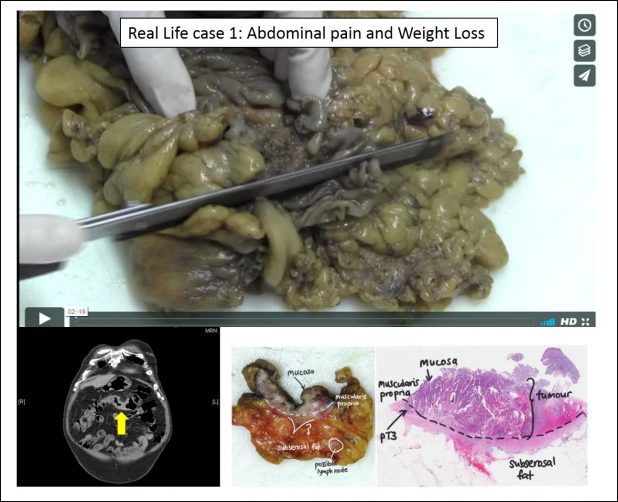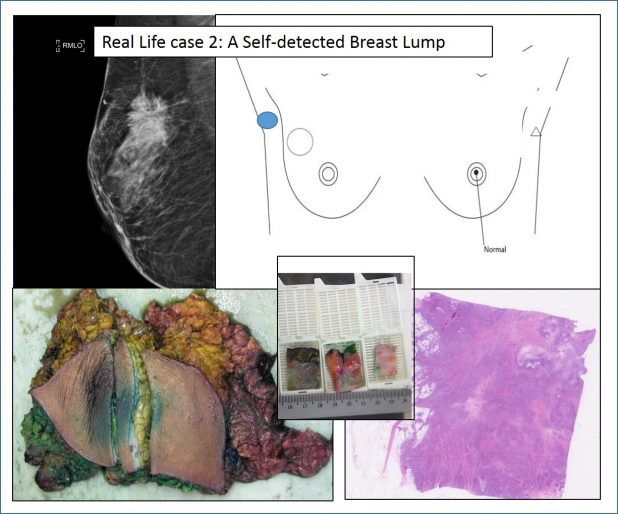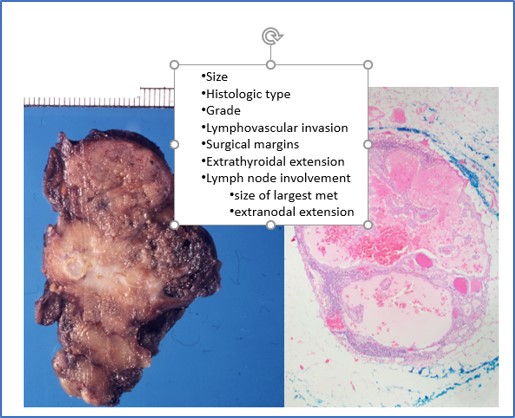pathology in action
What does a Surgical Pathologist actually do?
When you click on the pictures below, you will catch a glimpse of the pathologist in action, how we work together with the multidisciplinary team of health professionals to manage patients. The pathologist's role lies mostly in making the diagnosis on tissue samples, as well as in providing important information for the managing team, e.g. prognostic information in malignant specimens.
Here are some examples of how a pathologist evaluates real life cases - up to the point of the final pathology diagnosis.
In tumours that are resected, the first step is examining the gross specimen - inspecting, describing, measuring and sampling important areas. Thereafter, microscopic examination is performed, and a pathology report is written. From this report, the clinical team gleans important prognostic and treatment-related information, which helps them to proceed to the next step of management.
Warning: Some of the pictures and videos are quite graphic as they are actual representations of cases.
Scroll to the bottom of this page to also view links to some information on Laboratory tests and processes in the Pathology lab.
1. Colon
See how the pathologist handles a real life colonic resection specimen, and thereafter examines it microscopically.
Want to hear about a patient’s perspective? Click HERE to hear Dan’s story!
Click HERE to go to Gastrointestinal Chapter.
2. Breast
See how the pathologist handles a real life breast resection specimen, and thereafter examines it microscopically, for important prognostic information.
Click HERE to go to Breast Pathology Chapter.
3. Kidney carcinoma
See how the pathologist examines a case of kidney carcinoma, and performs staging and grading.
Click HERE to go to Urogenital Pathology Chapter.
4. Thyroid Carcinoma
See how the pathologist evaluates important prognostic parameters in thyroid cancer.
Click HERE to go to Thyroid Pathology Chapter.




